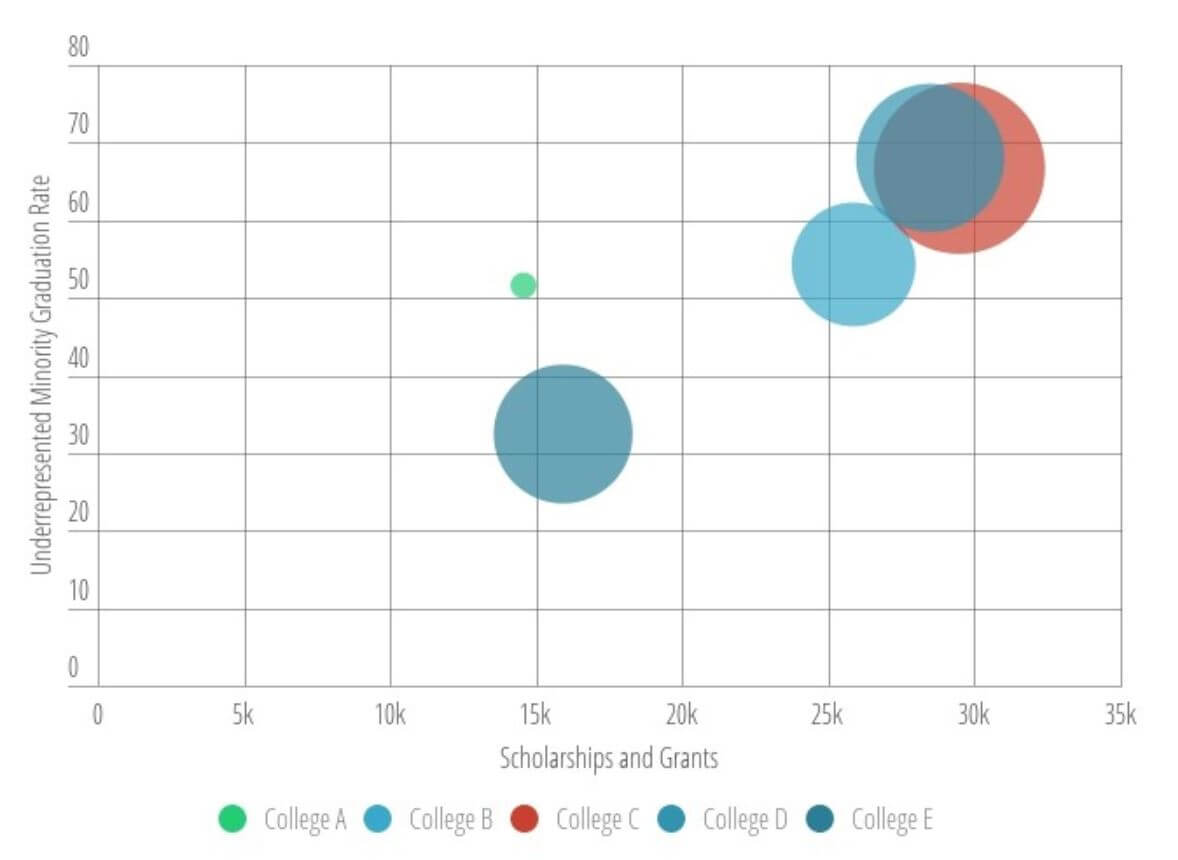Helping A Student Choose The Right College
For all the high school seniors in your life who are graduating and heading to college as a next step, choosing the right school is key. In honor of Friday’s National College Decision Day (May 5th) celebration, we want to share some advice – informed by the work of our portfolio organizations focused on college access and success – to help a young person make a smart college decision. Here are A Better Chicago’s top three questions to consider.
Check out graduation rates: How likely is it for students to graduate from a particular school?
Students have much better odds at one school versus another. Have your scholar research the graduation rates of the schools they are choosing between. The variation in outcomes across institutions is broader than you might expect. For example, among the public four-year colleges in Illinois, six-year graduation rates range from 20-84% for all students, 8-71% for African-American students and 18-76% for Latino students. Students can find this information and more at The Chronicle of Higher Education’s College Completion site. Other useful tools include the University of Chicago’s To and Through Tool and the College Scorecard. These tools make it easy to see how the graduation rates at different schools compare.
Students experience different levels of success based on the quality and depth of support that colleges provide. More selective schools generally do a better job of making sure their students graduate. That said, the recently launched Harrison Professional Pathways Program (HP3) at National Louis University seeks to break that pattern by offering a highly affordable option for students whose academic performance in high school may limit access to more selective institutions. HP3 supports students by providing them with success coaches who offer personal, professional and academic support, and by making a college degree truly affordable. HP3 aspires to achieve a 60% graduation rate for students who would be predicted to have a 25% graduation rate elsewhere.
Consider the student experience: What atmosphere is best?
Environment plays an important role in a young person’s college experience. High school may have started introducing them to new cultures, people, academic support and experiences. Think of college as the next level.
Have them consider what they think will be the best cultural fit. Tell them to research the clubs and organizations that exist at their prospective schools. Find out details about the student population – Do students live on or off campus? How common is Greek life? What are the things (food, activities, places) they absolutely can’t live without?
Ask them to think about what will be most effective for their learning style. Some colleges place an emphasis on student advising, while others let young people chart their own course. Some schools prioritize small classes over large lecture halls. School support can make or break a student’s potential for academic success.
Visiting a campus can be a useful way to learn more, but they can also find out a lot online or by connecting with current students and alumni. Websites like College Factual can help young people explore the student life at a college.
Mind the money: Is the financial cost and post-graduation debt level manageable?
When choosing a college, it is crucial to consider affordability. This goes beyond simply thinking about tuition or financial aid. The chart below depicts a student who has five options with very different estimated total costs (bubble size), underrepresented minority completion rates (Y axis) and scholarship and grant awards (X axis).
One might immediately look to the upper right portion of the chart, where scholarships, grants and completion rates are high. Colleges B, C and D all have underrepresented minority graduation rates above 50% and are offering significant scholarships and grants above $25K. However, the total cost to the student of attending College C will be over $55K, College D will be over $40K and College B will be just under $30K.
Let’s look at College A, where the completion rate is over 50% and the scholarship amount is just under $15K. Interestingly, it is College A that will leave the student with virtually no debt, with a total investment of under $1,000. College E is a high cost (over $35K) for a low completion rate (just over 30%). Understanding the complexity of this choice is critical. Assuming options are the same because they look similar on the surface can lead a student down the wrong path.
Chart: Completion rate, scholarship and grant amount and total cost

A real example of this is Phillip, a student with our grantee, Bottom Line. Phillip is choosing between Loyola University – Chicago, UIC, and Dominican University. Loyola is ideally his top choice, but he’s worried about his family affording the almost $7,000 yearly balance, even after he accepts his full federal Stafford loans. Dominican offers a much more modest price at $540/year after full loans, but does not offer his preferred major of marketing. UIC is probably his least preferred option, but he would only pay $1,716 a year if he wanted to graduate completely debt-free. Whether students are choosing a two-year or four-year college, it’s important to connect with the institution’s financial aid office and explore opportunities for scholarships. Websites like Fastweb compile thousands of scholarships that students can apply for.
Young people have many things to consider when choosing a college. Let’s help them do their homework to get into the right school. Use these tips when helping the scholar in your life, and remember A Better Chicago is rooting for every student’s success.
